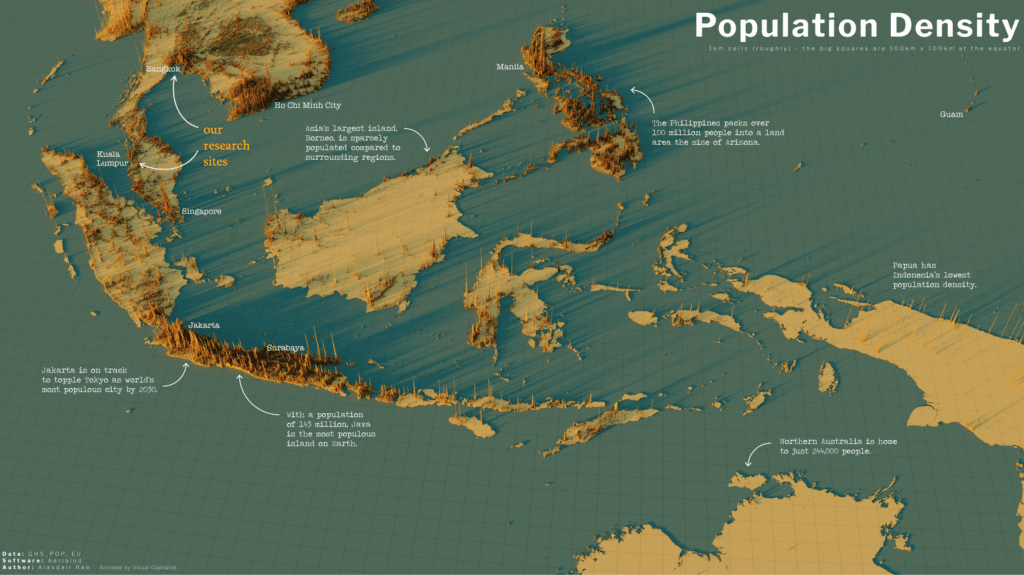Southeast Asia has been experiencing rapid urbanization over the past few decades, transforming its cities into bustling hubs of economic, social, and cultural activity. Urban areas in countries like Indonesia, Malaysia, and the Philippines are seeing unprecedented growth, driven by both public and private investment in infrastructure projects. As cities grow, so does the construction sector, which has become a key player in this Southeast Asia Urban Development transformation.
The Pace of Urbanization in Southeast Asia

In 1975, over 75% of Southeast Asia’s population lived in rural areas. Fast forward to today, and that figure has dropped to below 50%. By 2050, it’s projected that up to 65% of the region’s population will live in urban areas. This rapid Southeast Asia Urban Development is occurring not just in mega-cities like Bangkok, Jakarta, and Manila but also in smaller cities. We’re talking about cities with populations between 500,000 and five million. And as cities expand, the demand for housing, transportation, and services increases, driving massive infrastructure projects.
New Southeast Asia Urban Development Initiatives
The ASEAN Sustainable Urbanisation Strategy, launched in 2018, plays a critical role in guiding the Southeast Asia Urban Development. This strategy recognizes that urbanization is key to economic growth, as no country has achieved high-income status without urbanization. It emphasizes the importance of well-planned, managed, and financed cities to improve the quality of life for their residents.
However, with urbanization comes challenges, including environmental degradation, resource depletion, and pressure on public services. The ASEAN Sustainable Urbanisation Strategy addresses these issues by promoting sustainable practices, such as waste reduction and better management of natural resources. In Malaysia, for example, the government has rolled out infrastructure contracts for projects an example of the Southeast Asia Urban Development initiative. Not only this improves public transport but also focuses on sustainable development, such as waste-to-energy plants.
Construction Sector Growth Across Southeast Asia
Southeast Asia Urban Development has led to a boom in Southeast Asia’s construction sector. In Indonesia, the construction industry grew by 4.9% in 2023, fueled by increased government spending on infrastructure projects. The development of the Nusantara capital city has been a significant driver of this growth. For 2024, Indonesia’s construction sector is expected to grow by 5.8%, as the government allocates more resources to road construction and other infrastructure projects.
In Malaysia, the construction sector is projected to grow by 6.8% in 2024, spurred by government investment in large-scale infrastructure projects. The country’s New Industrial Master Plan 2030 aims to attract foreign direct investment, which will lead to higher demand for industrial construction.
The Philippines has also seen strong growth in its construction sector, expanding by 5.6% in 2023. The government’s Build Better and More program, which focuses on infrastructure, transportation, and energy projects, is expected to sustain this growth through 2024, with infrastructure spending projected to reach 5.2% of GDP.
In Vietnam, the construction sector grew by 7.1% in 2023 and is expected to maintain an annual growth rate of 7% between 2024 and 2027. The government’s focus on transport infrastructure has been a major driver of this Southeast Asia Urban Development growth, with several large projects completed in 2023 and more planned for the coming years.
Challenges and Opportunities for Southeast Asia Urban Development’s Future
While Southeast Asia’s construction sector is thriving, there are significant challenges that need to be addressed. Environmental concerns, such as waste management and rising sea levels, are pressing issues for many cities in the region. The ASEAN Sustainable Urbanisation Strategy aims to tackle these challenges by promoting smarter, more sustainable Southeast Asia Urban Development practices.
There is also a growing need for improved urban governance and finance. Many cities lack the technical and financial capacity to meet the increasing demand for infrastructure and services. Public-private partnerships have been explored as a solution, but regulatory and transparency issues have hindered their success in some countries. To meet their infrastructure needs, cities in Southeast Asia will need to explore new financing options, including domestic and foreign borrowing.
As Southeast Asia continues to urbanize, the construction sector will play a crucial role in shaping the future of its cities with Southeast Asia Urban Development. With the right planning and investment, the region can build sustainable, resilient urban areas that drive economic growth and improve the quality of life for millions of people.

